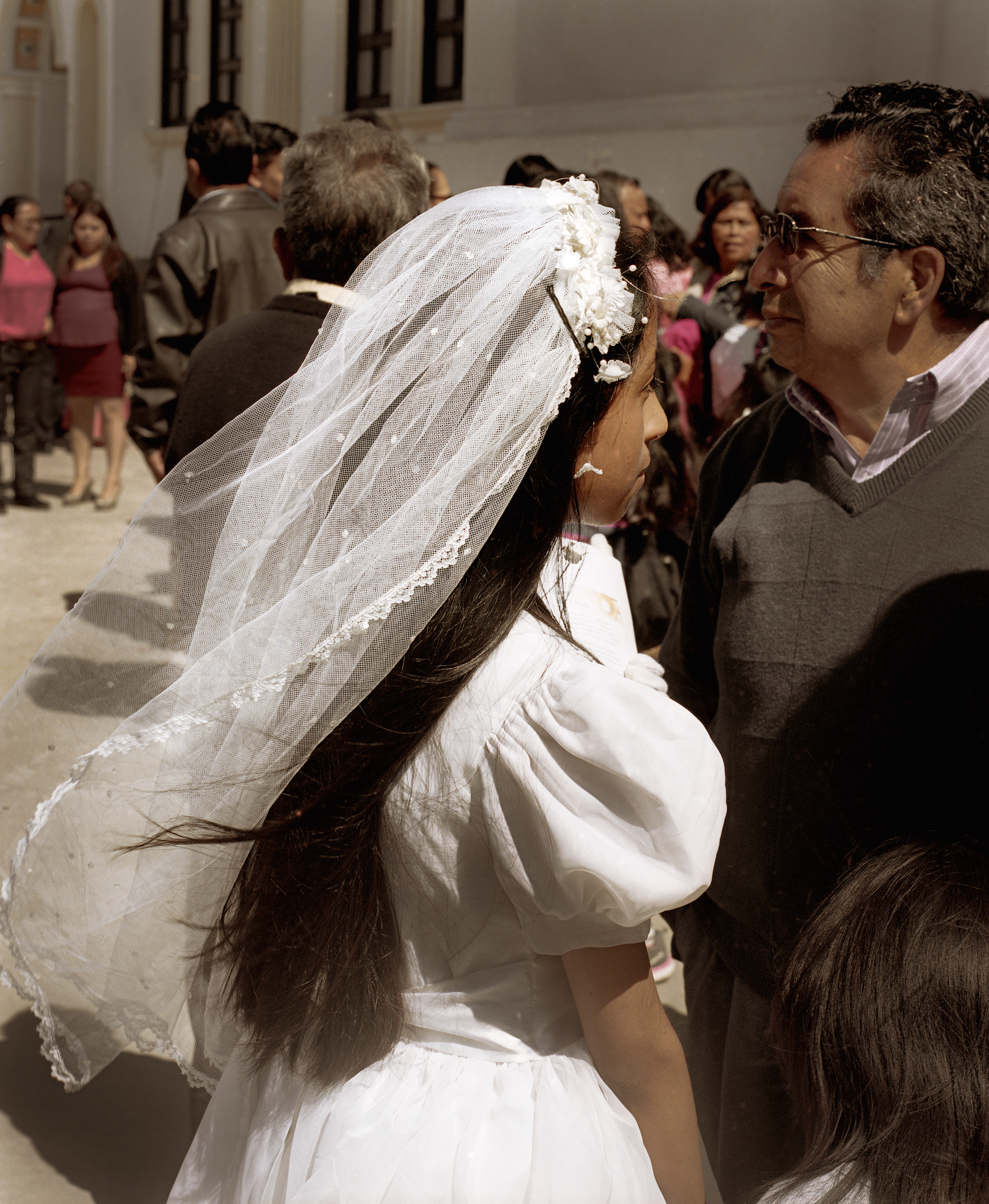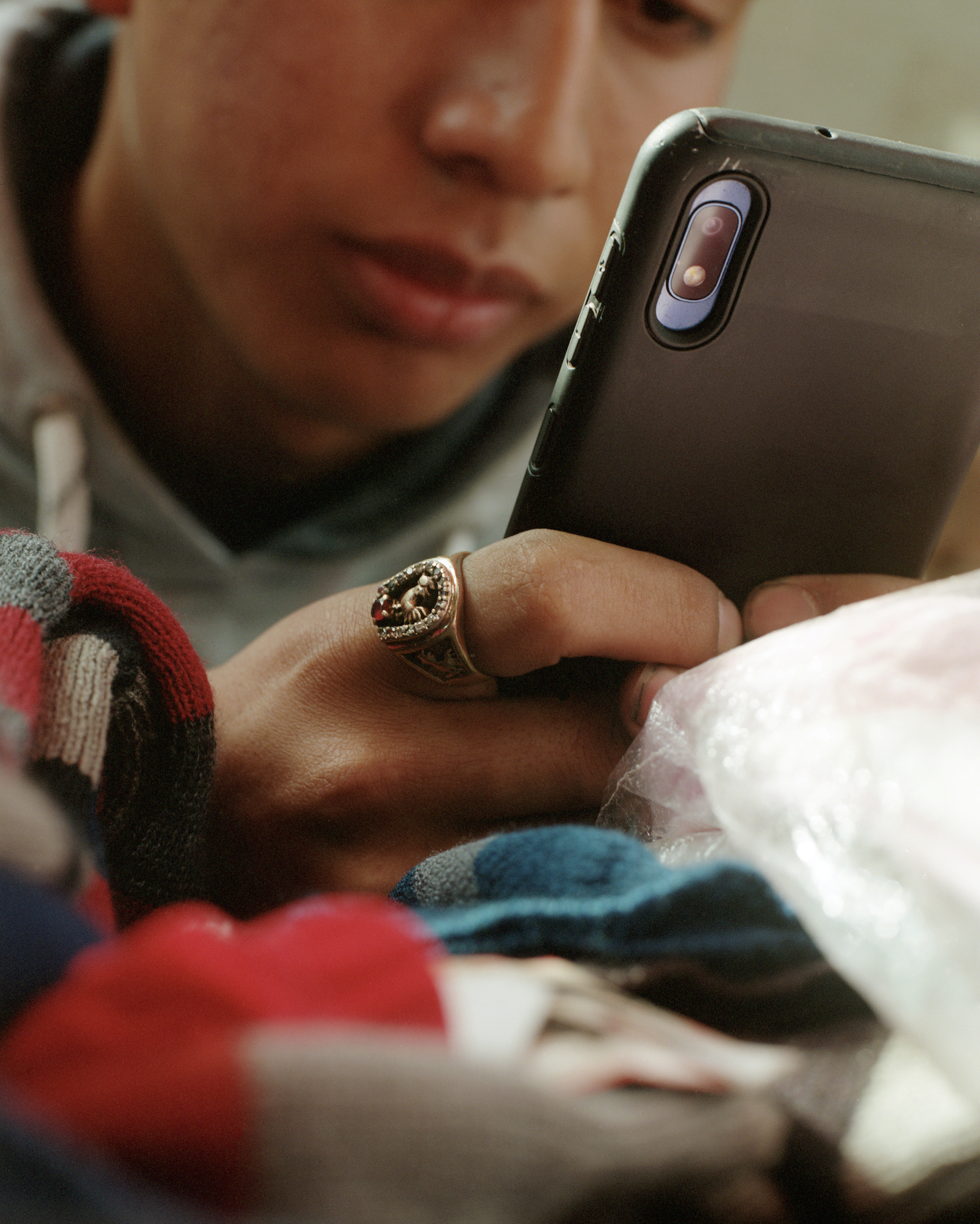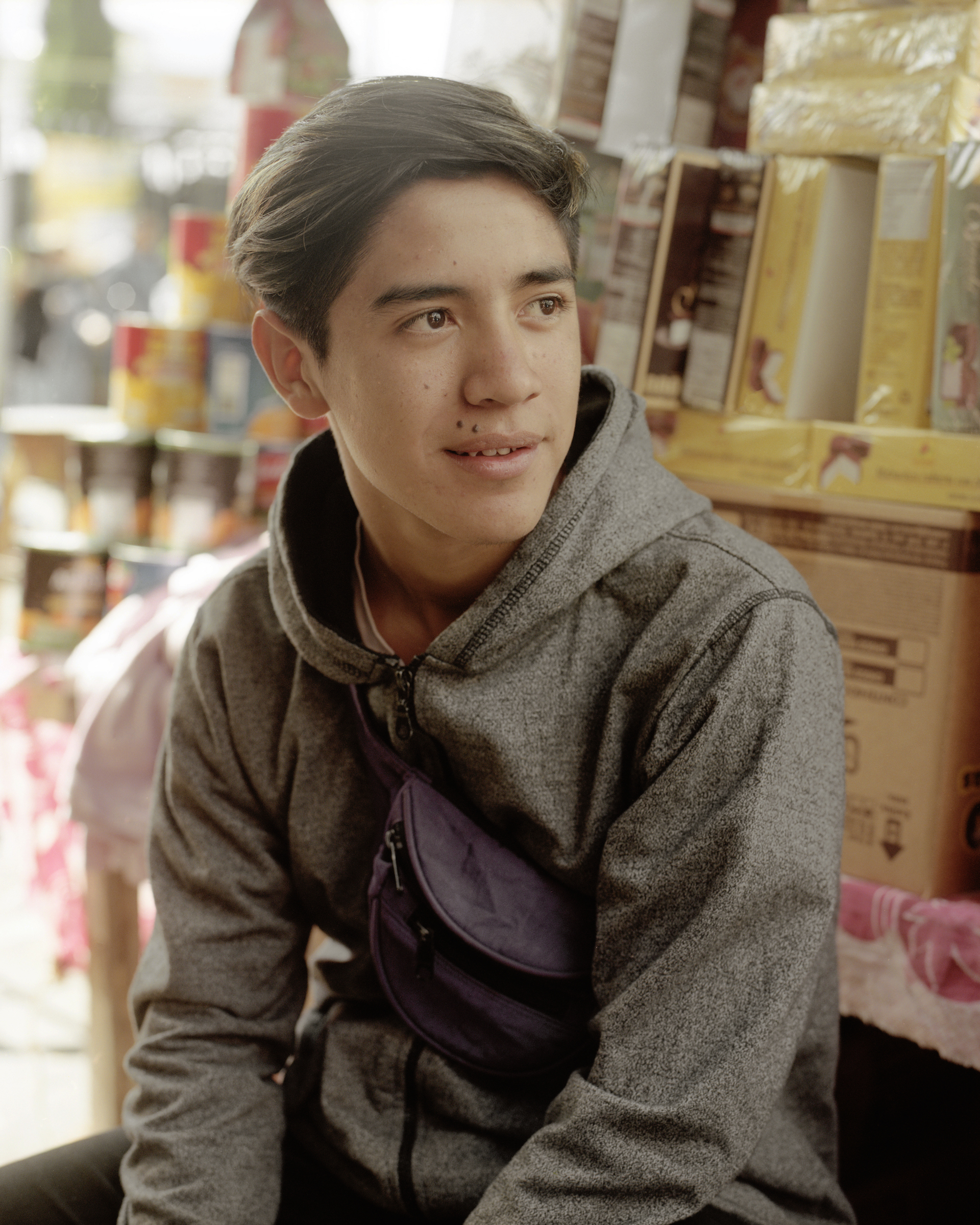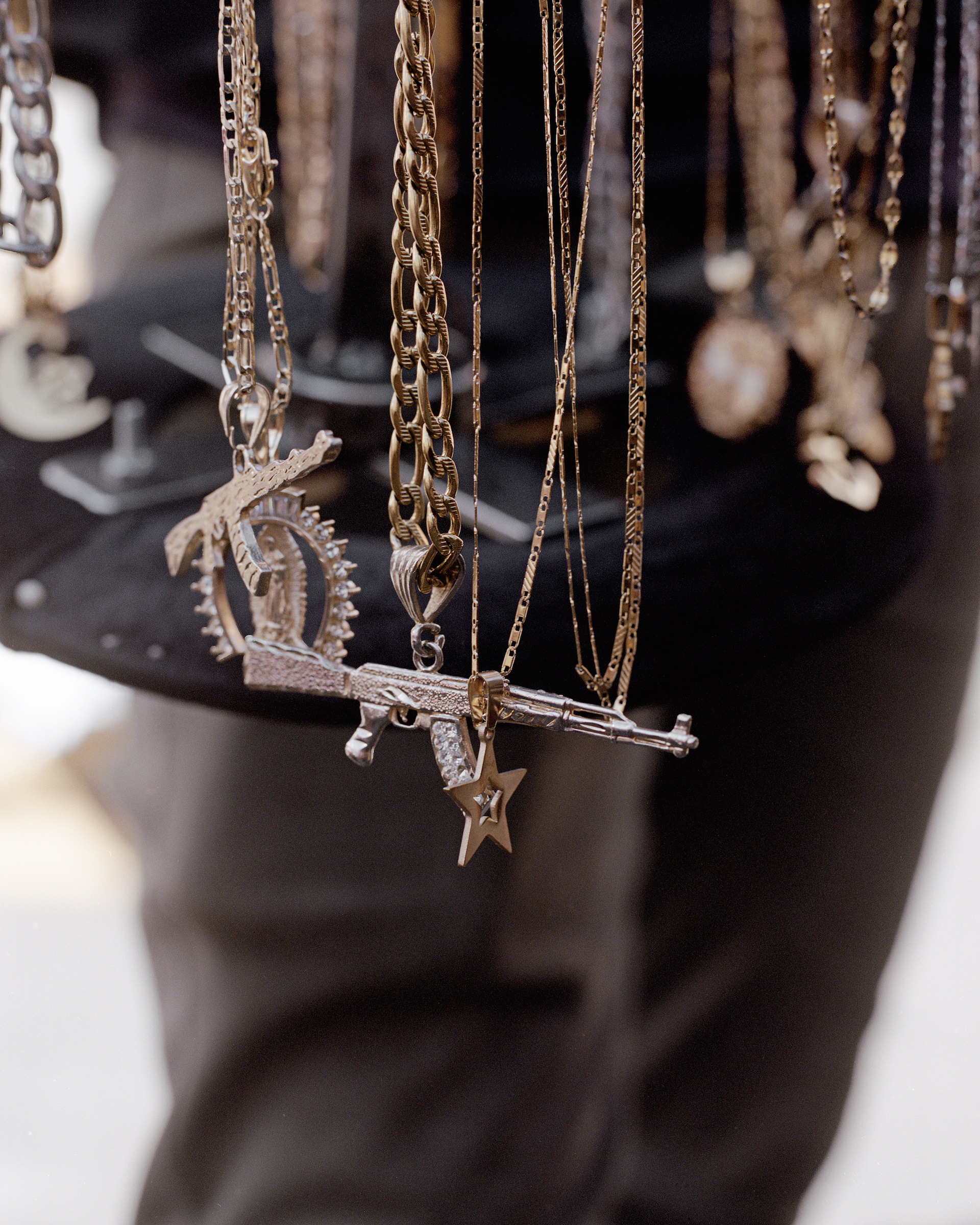In conversation with Sara Urbaez
Edited for length and clarity
Edited for length and clarity
Juan Brenner:
Portfolio Overview

I'm so excited to talk with you because I have been thinking about your work for some time and I'm just amazed by it, I feel transported to Guatemala. Has your photography always been connected to Guatemala?
I started doing photography in the late 90s here in Guatemala, and I'm 42. I was really young when I started. I've always been inclined to street culture — skate, hip hop, electronic music. I knew I wanted to be an artist since I was like 12 years old — I just didn't know what I was going to do. I accidentally picked up a camera and started doing photography here in Guatemala.
After a year or so, I knew I didn't want to be here — I didn't like what was going on here. I wanted to embark on an adventure. I had nothing to lose — I went to New York. One thing led to another and I became a fashion photographer — I was there for 10 years. So I was really into fashion photography, doing a lot, working a lot. The fashion scene, the parties and bad influences took over, so I came back to Guatemala.
At first, I didn't want to do anything with photography — I focused on doing a bunch of different things and just creating. But it was inevitable that I would gravitate back to photography, through different clients from the studio to my photo books. I'm addicted to photo books — my partner and I started a collection of them, a little bit fashion oriented, but also contemporary photography. And then I'm like, “Who am I kidding? I need to shoot, I need to do something — a project.”
After a year or so, I knew I didn't want to be here — I didn't like what was going on here. I wanted to embark on an adventure. I had nothing to lose — I went to New York. One thing led to another and I became a fashion photographer — I was there for 10 years. So I was really into fashion photography, doing a lot, working a lot. The fashion scene, the parties and bad influences took over, so I came back to Guatemala.
At first, I didn't want to do anything with photography — I focused on doing a bunch of different things and just creating. But it was inevitable that I would gravitate back to photography, through different clients from the studio to my photo books. I'm addicted to photo books — my partner and I started a collection of them, a little bit fashion oriented, but also contemporary photography. And then I'm like, “Who am I kidding? I need to shoot, I need to do something — a project.”


What was the feeling like of returning, after wanting so badly to get away from where you come from?
I ran away from Guatemala when I left. I didn't want anything to do with this place at all. I've always had bad blood with the whole Latin American photography concept. I don't like it. I'm a photographer, not a Latin American photographer. I happen to be from Latin America. No one talks about, “Oh, he's a European photographer.” Come on now. I understand why people did it, but at the time, I just didn’t want to — it was important for me to blend. I had to blend in, and I wanted people to see my work and be appreciative of it without knowing, without that factor.
When I started thinking about what I was going to do in Guatemala, I knew that disconnection was a really important part of my formation. When you’re disconnected, you don't know anything about your history, you're ignorant because you wanted to blend in. You were successful at blending, learning the language, you were successful at being accepted. You just left all that behind, but the place where you are from — the territory — it is important.
When I started thinking about what I was going to do in Guatemala, I knew that disconnection was a really important part of my formation. When you’re disconnected, you don't know anything about your history, you're ignorant because you wanted to blend in. You were successful at blending, learning the language, you were successful at being accepted. You just left all that behind, but the place where you are from — the territory — it is important.

I'm curious about the shift that happened once you were back in Guatemala. How did you start embracing your heritage?
I really wanted to reconnect and I started to do very formal, investigative research on the conquest of the Americas. I decided that I was going to do this project and spend a lot of time talking, investigating, and dissecting the topic of conquest. It’s called Tōnatiuh. “Tōnatiuh” means the sun and that was how the pre-columbian inhabitants of the territory nicknamed Pedro the Alvarado, conqueror of Guatemala. For me, this project is really somber. It's a dark project, especially seeing the effects of globalization on Guatemala.
I based my photography locations on the same path of the conquistadors from 500 years ago. There's so many details — the technology from this image above is from 3,000 years ago. With the mecapal, you put it on your forehead and you carry stuff. That's technology from 3,000 years ago that's still being used 500 years after the conquest. That's about 180 pounds that someone has to carry every day to have fuel and heat.
I based my photography locations on the same path of the conquistadors from 500 years ago. There's so many details — the technology from this image above is from 3,000 years ago. With the mecapal, you put it on your forehead and you carry stuff. That's technology from 3,000 years ago that's still being used 500 years after the conquest. That's about 180 pounds that someone has to carry every day to have fuel and heat.

Where was this image taken?
This is where the four lords of the K’iche empire were burned alive by the conquistadors — just weird things that happened here in Guatemala.


I noticed a lot of teeth and emphasis on that in the imagery. Can you tell me a bit about that?
One of the things I do in my practice is work around circular stories. What's going on with the gold teeth? 2,000 years ago, Mayan royalty started embellishing their teeth with jade, conch, and bone. The Mayan culture disappeared around 800, 900 years ago. The Spanish came in to conquer, destroy, genocide, death, slavery — colonization — maybe a hundred years ago. Suddenly, In the 20th century, a new economy started developing in the Highlands, and people started putting gold in their mouth again, just because they had the money.
It's beautiful how history repeats. Now they have money and they put in the gold teeth — the thing that the Spaniards came to the Americas for. And sometimes I felt like I was hunting for gold while shooting the project.
It's beautiful how history repeats. Now they have money and they put in the gold teeth — the thing that the Spaniards came to the Americas for. And sometimes I felt like I was hunting for gold while shooting the project.


Some of the most moving imagery shows how materialism and labels sneak their way in. The labels are small details, but once you see them in the image, it completely takes over.
It's just this post-colonial thing. I feel like Now the new invader is the American empire. The United States of America has reshaped our history — they started reshaping our history in the 40s, right after the second world war, when they started becoming scared about communism. They’ve reshaped our history in really bad ways.

For example, in this image, the young man is the first Catholic priest in his family, but his father is a Mayan priest priest — so this is insane. It's just so special for me.


How is your new project and how it's different from the Tōnatiuh project?
When I was shooting Tōnatiuh, I was in a really bad, dark place. I spent so much time investigating the conquest of Guatemala — all the information was so horrible, it was overwhelming. I was pissed off.
That's why the book is really dark and somber, but at the same time, while I was making pictures, you see beautiful things happening. And one of the things I see is how the new generation is reshaping their own aesthetic, and how they are embracing globalization in their own way — it's so cool to see.
That's why the book is really dark and somber, but at the same time, while I was making pictures, you see beautiful things happening. And one of the things I see is how the new generation is reshaping their own aesthetic, and how they are embracing globalization in their own way — it's so cool to see.


The newer series has this spirit of revolt. It feels like a “fuck you.” It feels as though jewelry and different status symbols are being used in a proud and subversive way. It’s absolutely thrilling to me.
What the colonists did and continue to do to us is horrible. That's what I want to talk about in my work. I also want to do it in a very blunt, stylish, digestible way. It's my obligation to show the other phase of the story, the next generation, but at the same time criticize and raise questions, because this is all very deep. The white man wants to have all of us under his boot. And that's what happened for the last 500 years. You have to understand that we were conquered and made slaves in our own land.
This image of car rims was taken in the middle of nowhere in the mountains. The highlands have had a noticeable boom in economy in the last two decades, Money sent from USA, Agriculture and Religion are probably the 3 most important pillars of the economy, it's known that drug money is being laundered in many ways, and definitely thru those pillars, so I'm very carefully investigating and trying to understand how much of this boom is tied to illicit Cartel money.
This image of car rims was taken in the middle of nowhere in the mountains. The highlands have had a noticeable boom in economy in the last two decades, Money sent from USA, Agriculture and Religion are probably the 3 most important pillars of the economy, it's known that drug money is being laundered in many ways, and definitely thru those pillars, so I'm very carefully investigating and trying to understand how much of this boom is tied to illicit Cartel money.
